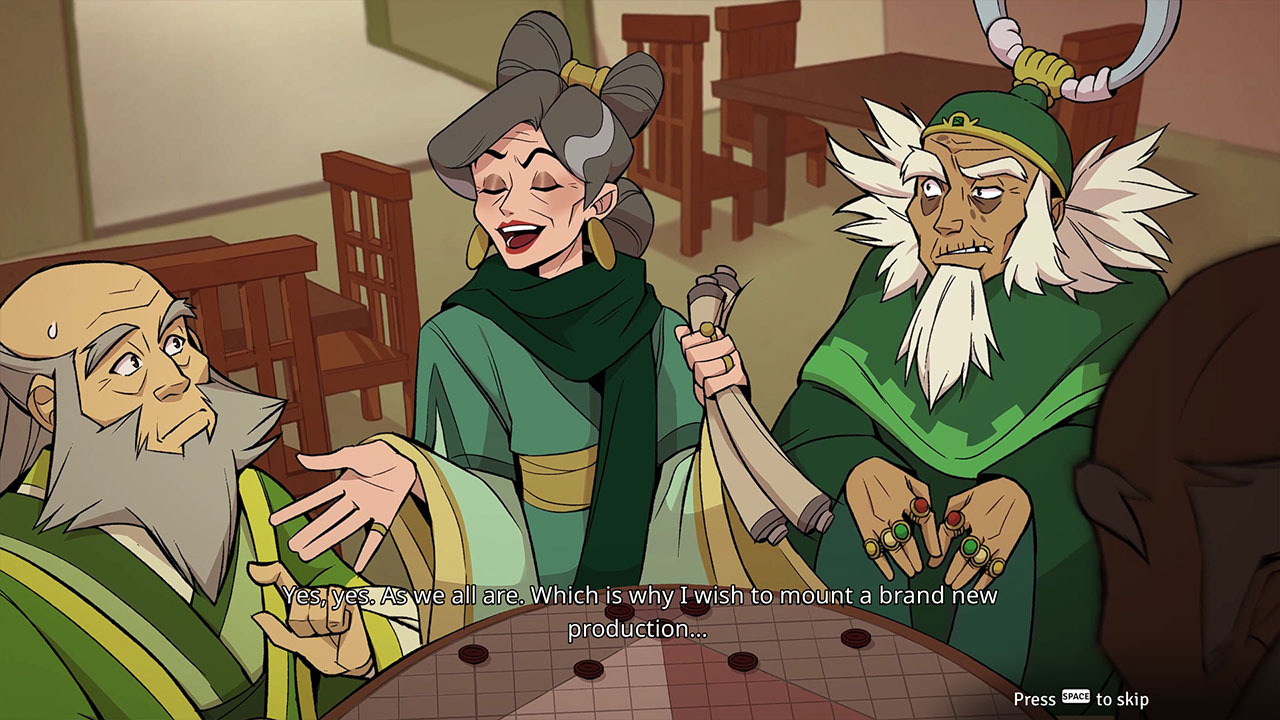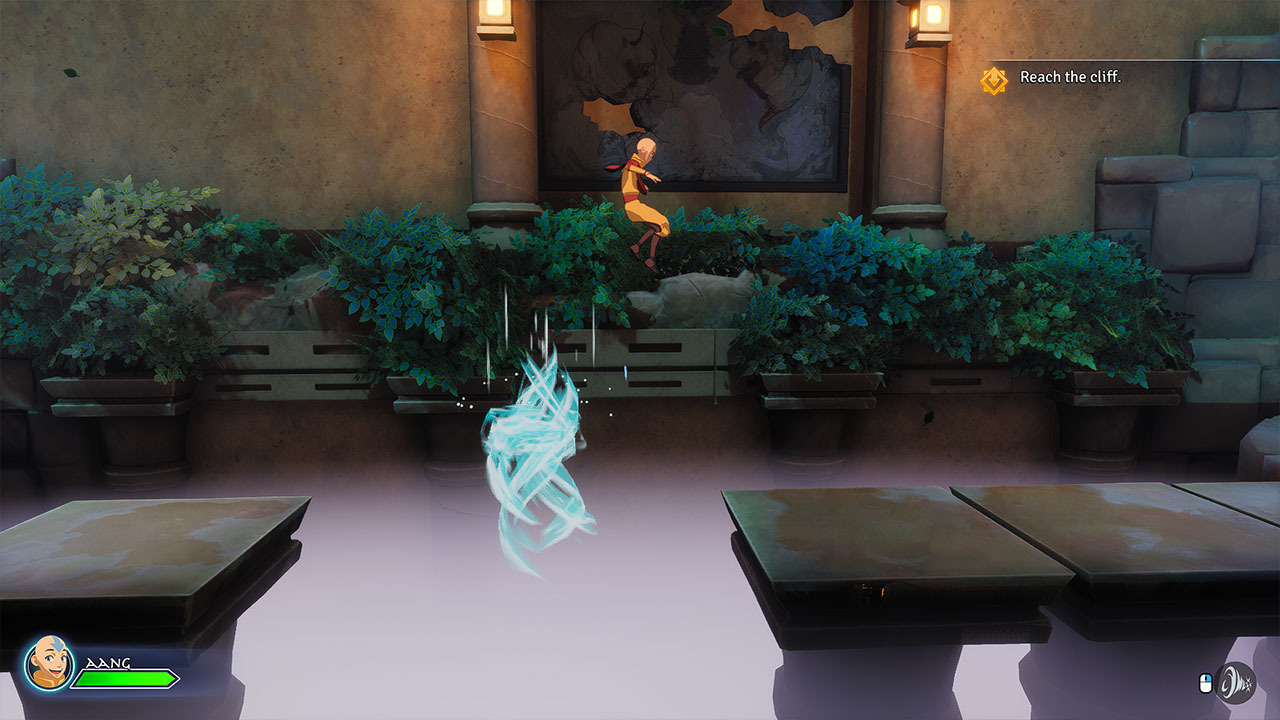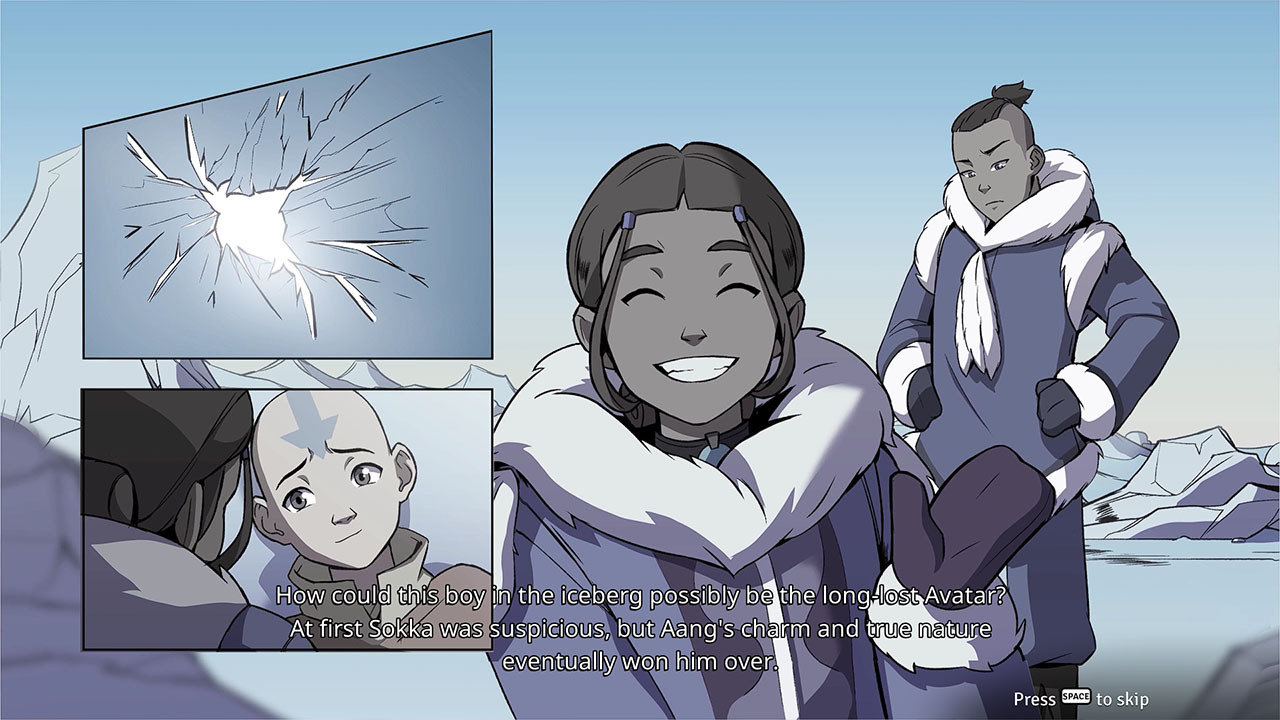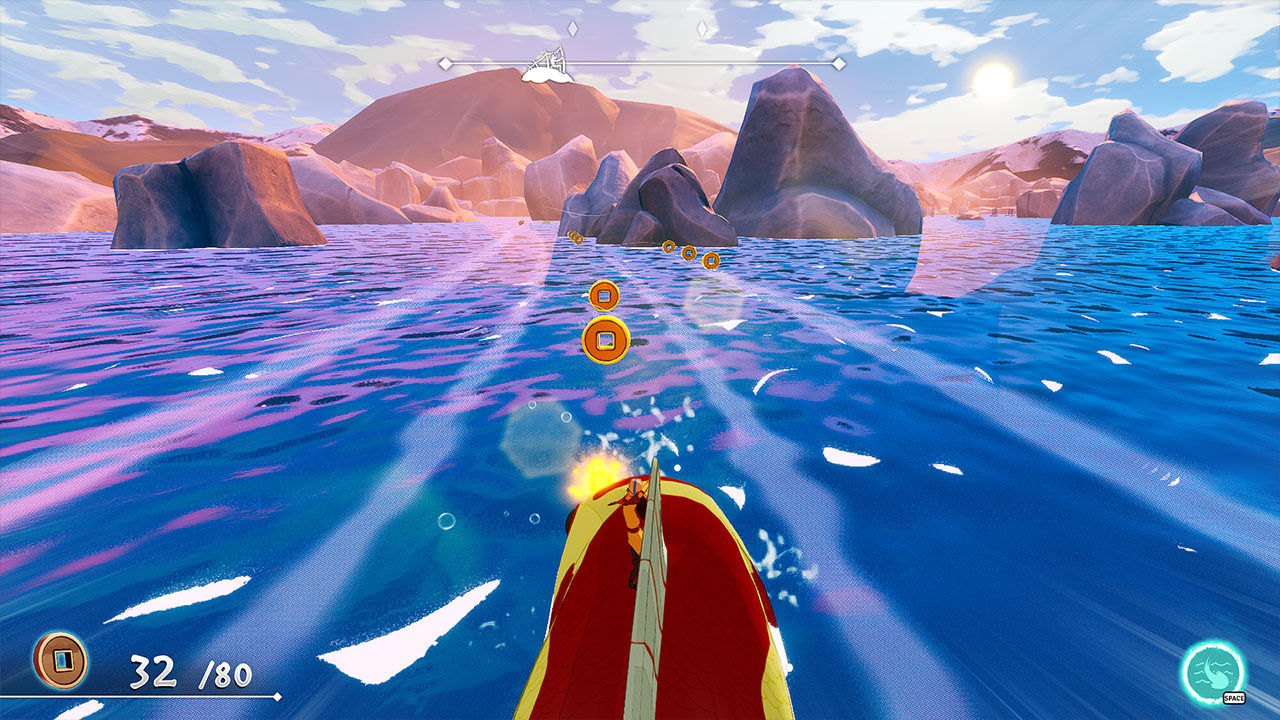Avatar: The Last Airbender - Quest For Balance Review
PC
Go on a clunky adventure to stop the Fire Nation, but now the story is retold with a few extras.
Reviewed by R3GR3T on Sep 27, 2023
With so many game developers on the block, it’s not surprising that there’s a bit of an arms race going on, but most developers have that one specialty genre that helps them shine. Bamtang seems to have been around since they were founded in 2012 in Peru, this plucky studio steadily climbed the ranks and developed several games for Mobile, PC and Console during time on the climb.
With games like Mystic Emporium and Soap Opera Dash on the lesser-known side and then from the same studio, we have releases like Kizi Adventures (A cute side-scroller for mobile) and Uncle Tiki (A good ol’ Tower Defence) to throw a wrench in the works. You’d think Bamtang can’t quite decide what they want to do…

This changed when they started getting the all too infamous Kart Racer genre, and they hit the nail on the head with their Nickelodeon Kart Racers series, which, by the way, might be older than more recent releases like Smurfs Kart, but actually puts them to shame. They had a good streak going, but this studio, in particular, is one of the more adventurous ones. This brings us to their latest release, Avatar: The Last Airbender - Quest For Balance, which was released on 22 September. So, get ready to explore the land with Team Avatar and help Aang, The Last Airbender, master his power and stop the Fire Nation from wiping out any form of freedom.
The world of Avatar: The Last Airbender - Quest For Balance is extremely similar to the original show that aired over a decade ago, Avatar: The Last Airbender, but it comes with a few interesting twists and a few major letdowns. You’ll get to play as each character from Team Avatar in this epic retelling of how Aang and his friends stopped the Fire Nation.
The people telling the story are none other than the Order of The White Lotus. Remember them? Iroh, the exiled Fire Nation General. Pakku, the Northern Water Tribe leader. And let’s not forget Bumi and his childlike wonder and hidden wisdom. These three are tasked with retelling the story of Team Avatar for Zongying, the director of the Ba Sing Se Players, most likely for her to put on a show for the people of the Earth Kingdom.
After some back and forth, our elder trio eventually starts telling the story of Team Avatar, and it begins with the Prologue. This is the part we didn’t exactly get to see in the show; even though it’s also a quick tutorial, it still feels like a lot more could’ve been added in to show Aang’s past and how he fled from the Air Temple when the Fire Nation attacked.
Such is life, and the show must go on. After getting encased in ice for 100 years, we get to the well-known events after where he’s discovered by Katara and her brother Sokka from the Southern Water Tribe. Things go even further South after that when a Fire Nation army led by Prince Zuko attacks the village, leaving the early stages of Team Avatar to defend.

The first thing you’ll get to play around with as just Aang is how his attacks work. The battle mechanics in Avatar: The Last Airbender - Quest For Balance only seem overcomplicated at first, but they’re actually quite simple. Granted, it could use a lot of polish and maybe even a few changes. Any character you play as will have a basic attack, either through a form of elemental bending or through the use of a weapon like Sokka.
Stringing three basic attacks together will land you a basic combo. The move list does expand slightly as you spend Bending Scrolls later on, but you’re stuck with the basics at first. Then there’s also your heavy attack; while technically slower, it does also do more damage, and investing Bending Scrolls in the right places will allow you to combine the two attacks together for a decent combo attack.
Naturally, there wouldn’t be much of a combat system if these are just attacks at your disposal. You’ll need to get the hang of dodging and blocking as well, though this is where things get a little weird. As we all know, every Bender in the Avatar universe has their own fighting style because each element has its own set of rules.
Just as an example – Aang being an Airbender means he can create a small shield in front of him to block projectiles and then fire it forward to knock enemies back, but he can’t attack while holding his shield. Katara is a Waterbender who uses a wall of ice as her block, but the key difference between them is that she can still move and attack, though she can’t move her ice wall and instead have to recreate it. This mechanic in itself is great and offers some good flexibility for different playstyles, but it gets thrown off by the target lock.

Yes, target lock is a great feature in a game like Avatar: The Last Airbender - Quest For Balance, but changing targets is a drag and really clunky at times. When most of your attacks are ranged, and you don’t have much HP to begin with, being able to dodge or block the right attacks when needed is a priority.
Sadly, Avatar: The Last Airbender - Quest For Balance fell short here and leaves you with either having to take the damage so you can focus on one enemy at a time regardless of who’s attacking you; or go through the struggle of trying to change targets on a game with zero controller support. That’s right, there’s no controller support; the one saving grace that could’ve made a difference is non-existent.
The other major letdown about Avatar: The Last Airbender - Quest For Balance and its battle mechanics is that you’ll get locked into a small area until the fight is over. This wouldn’t be such a major issue in most cases, but alongside the target lock issue making combat really clunky, you’ll be sad to know that you can’t rotate or pan the camera.
For a release that looks so much like a great semi-open-world, it acts more like a side-scroller with some extra restrictions on top that can make combat and just exploring in general a hassle. Freeing up the camera would already make a world of difference in this regard because you won’t get stuck behind walls or have to deal with bizarre panning while trying to jump around.
There is at least one saving grace in and out of combat that definitely proves to be useful – Each character also comes with their own unique special ability, such as healing, setting up traps, etc. However, if that still isn’t enough, then worry not because Aang has one more trick up his sleeve. During combat, as you attack with Aang, he’ll build up focus, which in turn boosts his damage. This might not sound like much, but it can make a hell of a difference in the right situations, though you’ll need to keep in mind that taking damage will also take massive chunks out of your focus bar too.

Combat might, for the most part, be a bust, but there is a lot more on offer in Avatar: The Last Airbender - Quest For Balance, though it doesn’t mean it’s all good either. One of the more important things you’ll need for story progression would be the Bending Challenges. You’ll find these scattered all over the world and sometimes hidden as well, but you’ll need to complete them to unlock new ways for Team Avatar to interact with the world.
Such as – Katara as a start, but any other Water and Earthbender, will unlock the ability to create blocks and ramps at designated spots. However, a little heads up when you come across these places just to say that you’ll need to learn an ability first would be a nice touch. The Bending Challenges can also somewhat form part of the story while you do the occasional brain-scratching puzzle. The puzzles themselves aren’t exactly difficult, though they do become impossible if you overthink it.
The world of Avatar: The Last Airbender - Quest For Balance isn’t all doom, gloom, and strange puzzles; you’ll also have to participate in Races. Sadly, you’re not racing against other people or players, and it’s more along the lines of Temple Run… You know, that mobile game that started a massive uptick in games just like it where you’re in 3 lanes and basically just have to dodge obstacles by moving out of the way and collect coins for some added bonus.
Races are exactly that but shorter, though these also come with a nifty special ability that varies depending on the type of race. These abilities can range from a speed boost on land to diving underwater if you’re riding a fish. Unfortunately, this doesn’t mean it’s easy to control either, and you’ll likely end up hitting several obstacles on the way if you want to keep using the ability to make life a bit more interesting.
Life in Avatar: The Last Airbender - Quest For Balance does get a little bit better in some aspects, such as the shops and with consumable items. With coins hidden everywhere, including behind anything that can be destroyed, you’ll almost never have a lack of money to spend. However, shops do have two specific items that, while they cost a small fortune, can be well worth the coins you’ll spend on them. These two items are Pai Sho Tiles, which are used to upgrade each character’s skill tree for things like extra damage, further effects to their attacks, health upgrades, and more, along with Bending Scrolls, which are used to unlock special Bending movesets.

To save the best, or worst for last, boss fights. Anybody who’s seen Avatar: The Last Airbender knows that Prince Zuko has made it his mission to capture Aang. He’s going to be your most common boss fight, and probably the simplest one at that, but there are others to expect as well. Boss fights stand out among normal battles because you’re mostly just fighting against one person, and that same person does bring new twists to the fight that keep things interesting. Unfortunately, boss fights still suffer from the same flaws as any other fight, so you’ll still need to stay on your toes if you want to win.
On the visual front, Avatar: The Last Airbender - Quest For Balance doesn’t really have much to show. The visual style itself comes off as semi-retro and looks like it was made for hardware from the lower ends, though this gets contrasted very quickly with just how demanding the game can be on resources. This alone should count as a red flag.
However, things only get a bit weirder with the use of snap animations for turning while moving, something that is rarely seen because of how much it can lower the visual quality for any half-decent release. This brings us to one last devaluation of what could’ve been great for a game like Avatar: The Last Airbender - Quest For Balance, the use of a quick voiced paragraph to explain a new event that took place instead of using a cutscene. The cutscenes as a whole rely heavily on minimal animation and still images; doing the same for these new events would actually boost the story quality as a whole.
Overall, Avatar: The Last Airbender - Quest For Balance is, unfortunately, lacking in some aspects and overdone in others. The story is mostly based on the original, and adding in extra events is a nice touch, but simply narrating it instead of showing it didn’t help the low-quality storytelling at all. The combat system needs a lot more polish, and the lack of camera controls that effectively force it to be more like a side-scroller instead makes it difficult to enjoy the game for what it is. Nostalgia alone isn’t enough to get an underbaked release off the ground.
Editor, NoobFeed
Verdict
Avatar: The Last Airbender - Quest For Balance is, unfortunately, lacking in some aspects and overdone in others. The story is mostly based on the original, and adding in extra events is a nice touch.
35
Related News
No Data.

